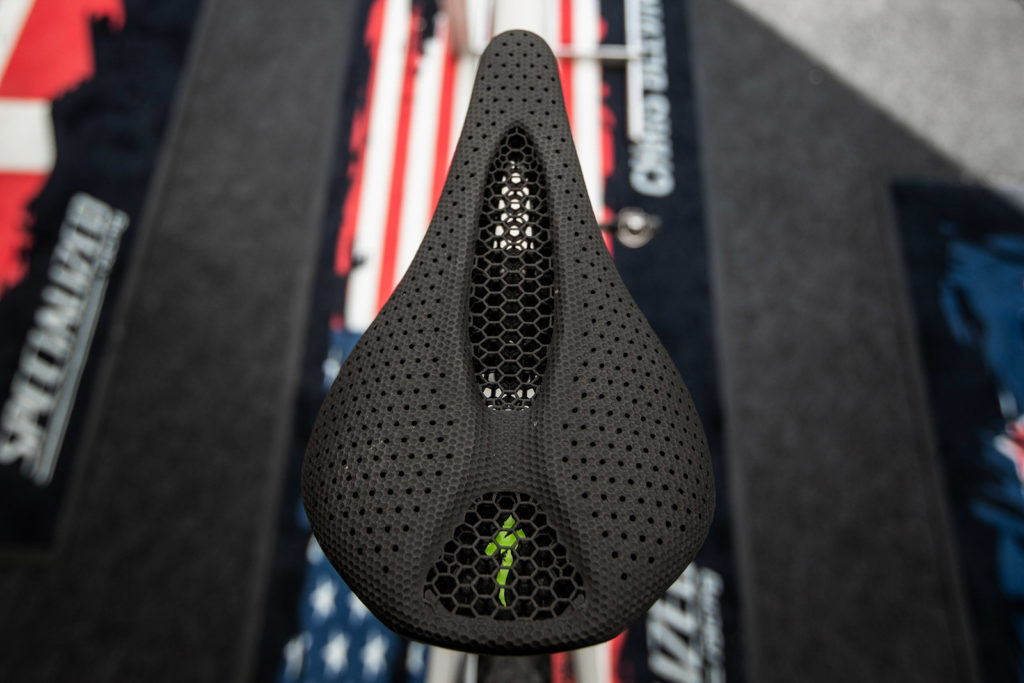[해외]현실 인가 과대 광고인가: 3D 프린팅은 스포츠 산업에서 성능을 향상시키는가?
- 2020-12-08
- 관리자
○ 본문요약 :

나는 스포츠 팬은 아니지만 헬멧, 마우스 가드부터 서프보드, 신발 등 3D 프린팅의 응용 분야를 많이 알고 있다. 하지만, 우리가 생각하는 것만큼 널리 퍼진 것일까, 아니면 단지 과대 광고의 문제일까? 데킨대학과 시드니 공과대학의 호주 연구자 한 쌍이 그 답을 알고 싶어 궁금했고, 최근 적층 제조가 스포츠에서 성능을 향상시키고 있는가라는 논문을 발표했다. 스포츠 엔지니어링 및 기술 저널의 주제에 대한 체계적 검토"라고 말했다.
Sport는 적층 제조(AM)가 제공하는 기회로부터 이익을 얻을 수 있는 산업이며, 미디어는 스포츠 제품에서 기술의 채택이 증가하는 것을 묘사했다. 두 사람은 "이번 체계적 검토 및 메타분석 프로토콜(PRISMA-P) 2015년 이후 스포츠 분야에서 AM의 적용에 관한 이용 가능한 경험적 증거를 통합하고 해석하기 위한 것"이라고 추상적으로 썼다.
체중 감소, 커스터마이징 및 저용량 실험 능력과 같은 3D 프린팅이 제공하는 이점은 몇 가지 예를 들어 항공우주 및 의료 분야에서의 응용 분야에서와 마찬가지로 스포츠 산업에도 매력적인 기술이다. 대부분의 경우, 스포츠 용품은 "선수 키, 몸무게, 발 크기, 사지 길이와 같은 규범적 모집단의 신체적 특징에 적합하다"고 연구자들이 썼듯이 대량 생산된다. 정형외과적 깔창과 같은 맞춤형 제품은 보통 제한된 크기로만 만들어지지만 3D 프린팅은 이를 변화시킬 수 있어 성능 향상, 편안함 강화, 부상 감소에 도움이 된다.
이 모든 것이 훌륭하고 좋게 들리지만, 아디다스 퓨처크래프트 신발, 패럴림픽에서 사용되는 여러 의족, S-Works Power Saddle for Specialty Bicle Components와 같은 주요 3D 프린팅 스포츠 이야기와 상관없이, 연구자들은 이 기술을 스포츠에 사용하는 것에 대한 학문적인 연구가 많지 않았다고 설명했다. 이러한 이론적 편익이 실제로 실현될 수 있는지 여부를 확인하기 어렵다." 더욱이 대부분의 3D 프린팅 스포츠 제품은 데이터나 사례 연구를 지원하지 않고 있으며, 2019년 한 연구에서는 "스포츠 산업이 AM 기술에 대한 인식이 전반적으로 부족하다" "새로운 형태의 제품과 시장의 생산을 촉진하기 위해 3D 프린팅이 어떤 의미 있는 방법으로도 구현되지 않고 있다"고 보고했다.
연구진은 데이터베이스 수가 적고 "극히 구체적인" 키워드가 검색되어 일부 관련 문헌을 누락했을 수 있다는 점에 주목했다. 그러나, 그들은 또한 어떤 누락된 기사도 "이 연구의 발견과 권고를 크게 바꾸지는 않을 것"이라고 언급하고 있다.
"이 연구 결과 적층 제조가 아직 스포츠 용도의 학계 내에서 주류가 되지 않았다는 결론을 내릴 수 있다. 3D 프린팅과 적층 제조 뉴스 웹사이트, 제조 무역 박람회, 컨퍼런스가 빈번한 사례에도 불구하고, 2019년 5월까지 26건의 동료 검토 기사만 확인되는 등 스포츠 제품 생산을 위한 AM 채택을 뒷받침할 과학적 증거가 거의 존재하지 않는다고 연구진은 결론지었다.
"이 연구는 현재까지 증거를 객관적으로 취합함으로써 스포츠 제품을 제조하기 위해 AM 사용을 둘러싼 과대 선전물을 차단하고 모든 경험 수준의 제조업체, 제품 디자이너 및 운동선수를 지원하기 위해 엄격하고 지속적이며 지속적인 연구의 필요성을 강조한다."
I’m not a big sports fan, but even I’m aware of the many possible 3D printing applications, from helmets and mouthguards to surfboards and shoes and so much more. But, is it really as prevalent as we think, or is it all just a matter of hype? A pair of Australian researchers, from Deakin University and the University of Technology Sydney, were curious to know the answer, and recently published a paper, “Is additive manufacturing improving performance in Sports? A systematic review,” on the subject in The Journal of Sports Engineering and Technology.
“Sport is an industry that may benefit from the opportunities offered by additive manufacturing (AM), and the media has portrayed increasing adoption of the technology in sports products. This systematic review aimed to consolidate and interpret the available empirical evidence concerning applications of AM in sports following the Preferred Reporting Items for Systematic Review and Meta-Analysis Protocols (PRISMA-P) 2015,” the two wrote in the abstract.
The benefits that 3D printing offers, such as weight reduction, customization, and low volume experimental capability, make the technology just as attractive to the sports industry as they do for applications in aerospace and medical, to name only a few. Most of the time, sporting products are mass produced in order to, as the researchers wrote, “suit normative population physical characteristics such as athlete heights, weights, foot sizes and limb lengths.” Any customized products, like orthotic insoles, are normally only made in a limited amount of sizes, but 3D printing can change this, which helps improve performance, enhance comfort, and diminish injuries.
This all sounds well and good, but regardless of any major 3D printed sports stories, such as the Adidas Futurecraft shoes, multiple prosthetics used in the Paralympics, and the S-Works Power Saddle for Specialized Bicycle Components, the researchers explained that there hasn’t been much academic research into using the technology in sports, so “it is difficult to ascertain whether these theoretical benefits could be realized in practice.” Even more, most 3D printed sports products are not supported with data or case studies, and one 2019 study reported that “the sports industry has a general lack of awareness of AM technology” and that 3D printing is “not being implemented in any significant way to drive production of new forms of products and markets.”
The researchers did note that they may have missed some relevant literature due to a smaller number of databases and “extremely specific” keywords searched. But, they also state that any missing articles would likely not “significantly alter the findings and recommendations of this research.”
“As a result of this study it is possible to conclude that additive manufacturing has yet to become mainstream within academia for sporting applications. Despite exemplars frequenting 3D printing and additive manufacturing news websites, manufacturing trade shows and conferences, little scientific evidence exists to support the adoption of AM to produce sports products, with only twenty-six peer reviewed articles identified up until May 2019,” the research duo concluded.
“Through objective collation of the evidence to-date, this research cuts through the hype surrounding the use of AM to manufacture sporting products and highlights the need for rigorous, sustained and ongoing research in order to support manufacturers, product designers and athletes of all experience levels.”
○ 출처 :
https://3dprint.com/276397/reality-or-hype-3d-printing-improving-performance-in-sports-industry/

















